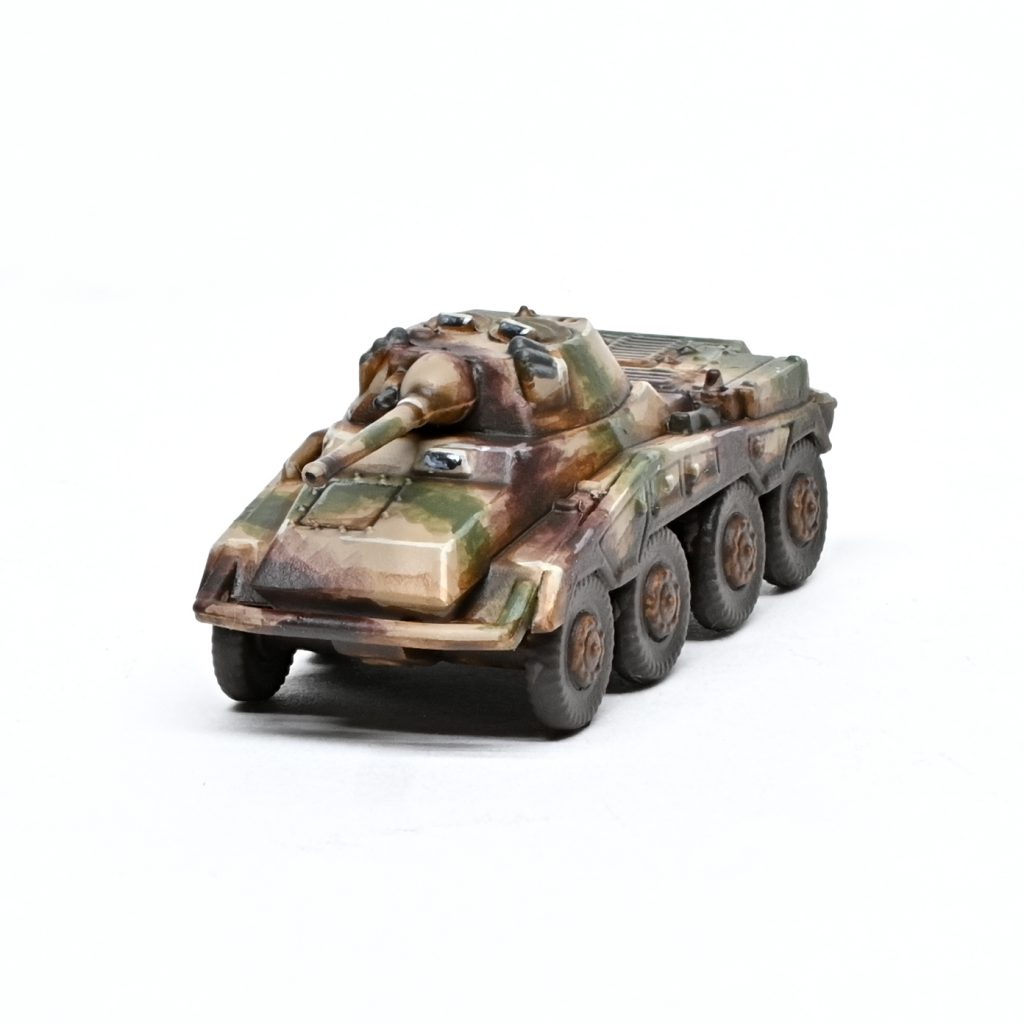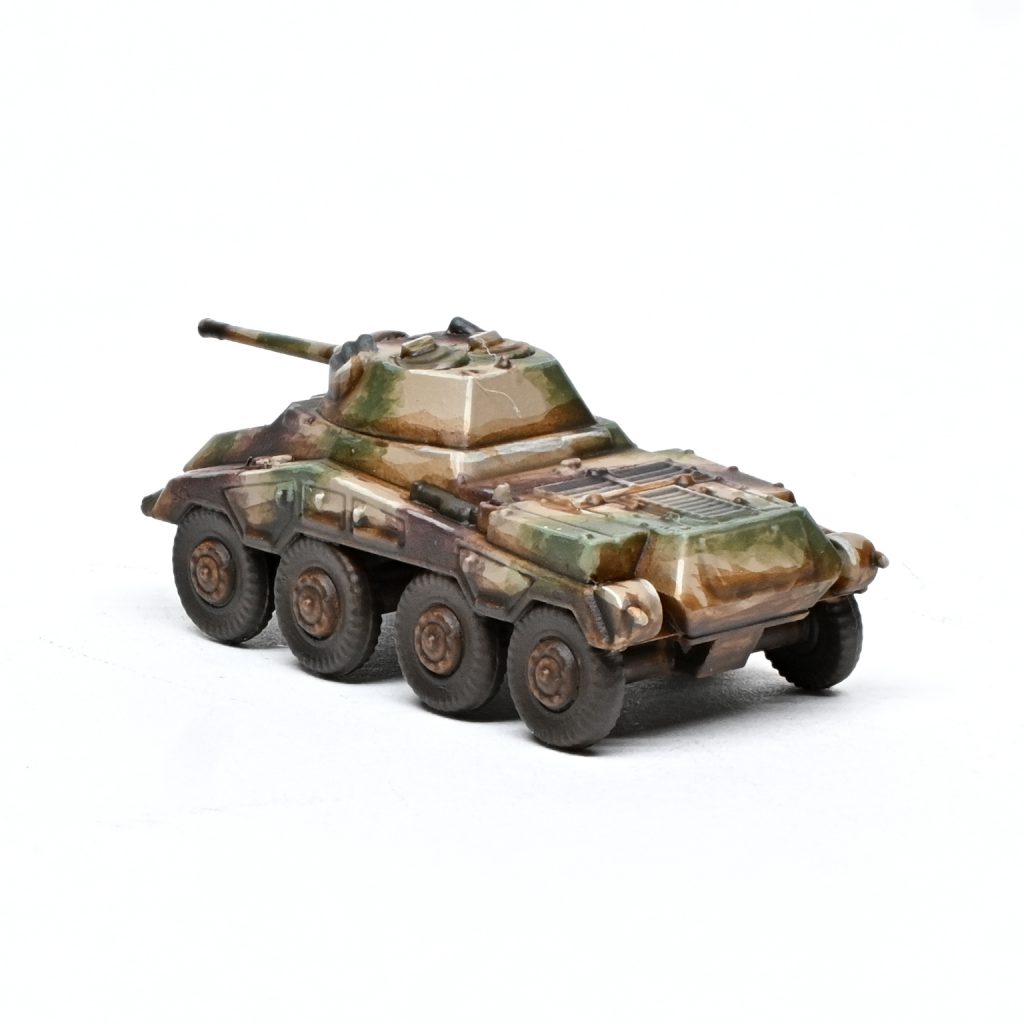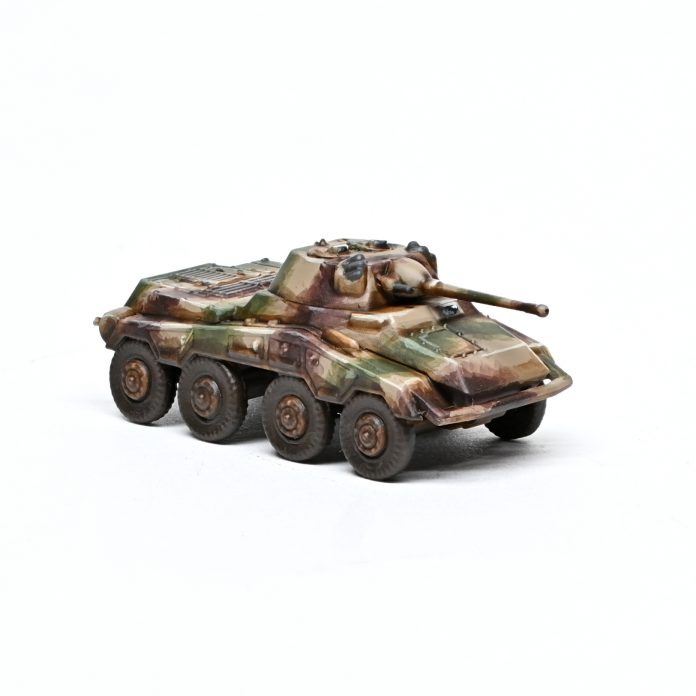If you’ve seen any of our content about Victrix stuff then I expect that most of what I am going to say of this kit isn’t new but it’s always worth repeating, as it’s just that good. I genuinely love the quality of these plastic tanks and vehicles that Victrix has been filling their 12mm WWII range with, they would hold up well even if scaled up and that’s thanks to their excellent detail and builds and the Puma neatly fits in with the rest as it embodies all their usual characteristics, which in some ways limits what I can say of it.

I could speak to historical accuracy, but I am not that much of a history buff more a mini painter. I don’t see anything untoward when I look at pictures of the real-world vehicle so that leaves me happy, and realistically I think that at this scale getting to the point where an amateur like me can’t point anything out when comparing to old pictures is more than sufficient.
I could spend a bit of time talking about the plastic itself, but if you’ve read my previous review of the Loyd Carrier and 6pdr then basically everything I said about the build quality is just repeated here. The Puma is just at about the right number of pieces for everything to be wonderfully detailed without being a pain in the ass to get together or getting too far into rivet counting, etc, etc. You can get a little more specific with this kit as I will admit I did have a couple of minor issues while building, but they aren’t major, and one isn’t even their fault. Let’s start there since it’s just a reminder of something to watch out for, I didn’t notice that the turret hatches weren’t entirely situated when the glue set so I would suggest poking them with a pair of tweezers to make sure they are fully settled before you walk away. The other probably is a minor issue with the kit, in that the holes in the back of the wheels for the axles to set into are just a little too tight. I ended up letting plastic glue sit for a bit to soften the socket then just applied force to get the wheels mostly situated, but it might be easier to just slightly open up the sockets with a drill/mold line remover or scrape down the axles a bit. Regardless of the approach you take, this is a relatively minor setback to have so doesn’t detract from the model quality.

The last thing I can really put much real thought into talking about would be how the painting experience is. Honestly, the Puma is a great canvas for trying out schemes, as it has a nice mix of textures. You’ll find that the different armor panels, rubber wheels, stowed tools, and its detailed engine deck all serve to let you test all the main materials needed for any other German vehicle without them being on a larger or more convoluted model that would take more time to get through. I was actually trying out an entirely untested scheme when I worked on this model myself, which is where I will make another admission in that I didn’t remember to go and check if this is a historical camo pattern for WWII Germans. it’s something I had in my head very confidently when I sat down to paint and now I am too scared to go and look, but I was roughly trying to replicate the idea of airbrushed or ‘dotted’ on color transitions at a small scale. While you can use an airbrush for this, I tend to find that I can’t get mine to avoid enough of a recognizable ‘spatter’ pattern when working on something tiny like this, and while that is technically what we are trying to replicate, the issue is that the scale is too far off. A pin prick-sized spatter spot from the airbrush would be like the size of a dessert or dinner plate at this scale, which in my opinion throws the effect off. I ended up doing crude glazes which kinda get the effect I am going for and is close enough to satisfy me without being excessively time-consuming. I’m intending to do a HTPE at some point, but I’ll need to prime up another model as I didn’t get any WIP shots as I did this one all in a single sitting.
Just to wrap things up after thoughts I managed to string together, it’s hard to find anything to fault with this model that isn’t easily worked around. As usual, Victrix managed to put out a great kit!

Using your Puma
The Puma is a surprisingly powerful and exceedingly fast threat in any game system you care to name. As always, we’ll recommend checking out Victrix’ Company Commander for fast games with an AR assist, as you can see in our review. It’s another lovely kit in an exciting and fast-growing range and more variety in plastic is never a bad thing!
Have any questions or feedback? Drop us a note in the comments below or email us at contact@goonhammer.com.



You must be logged in to post a comment.